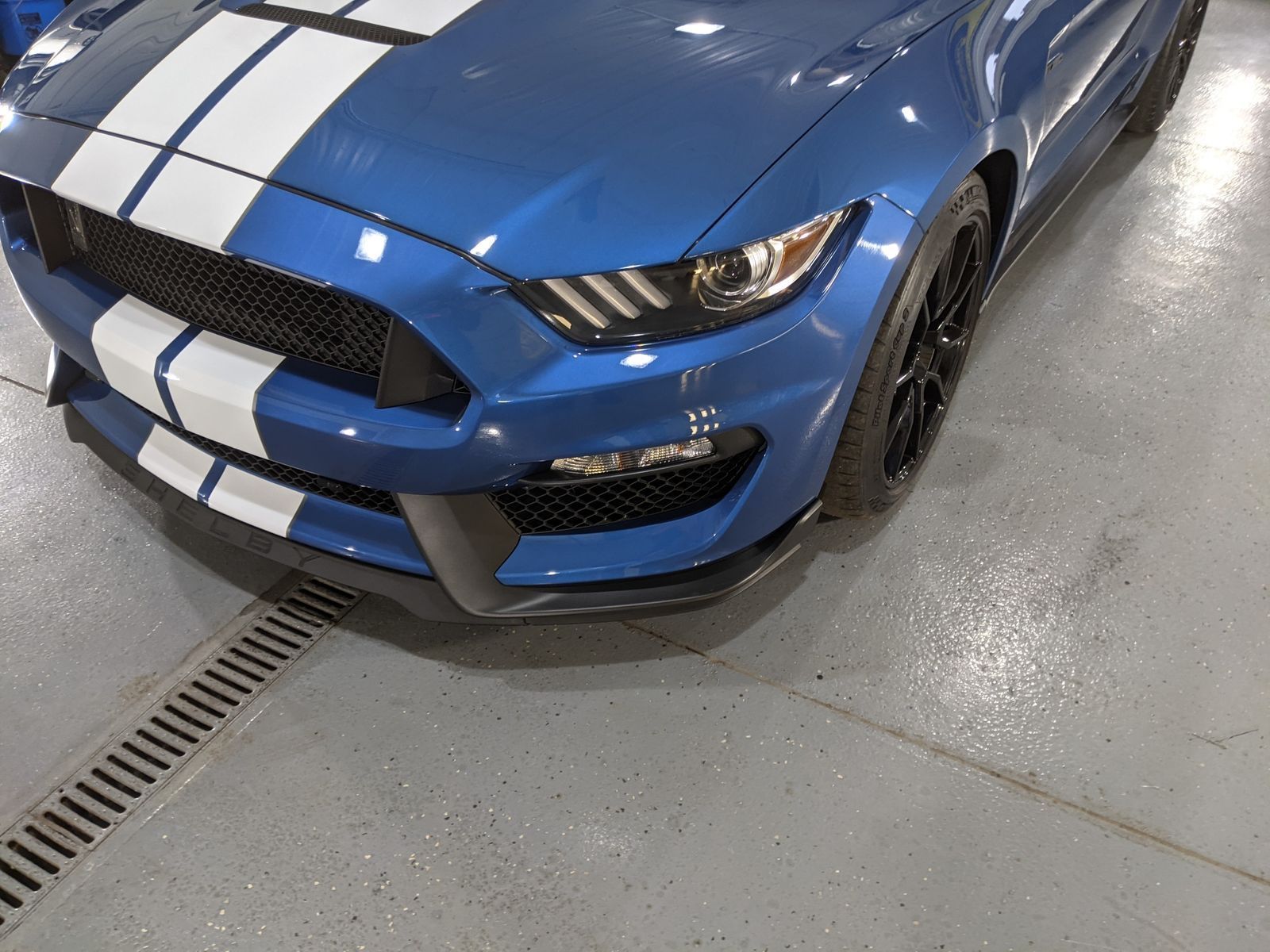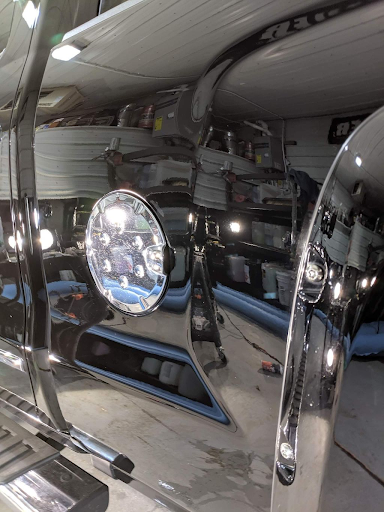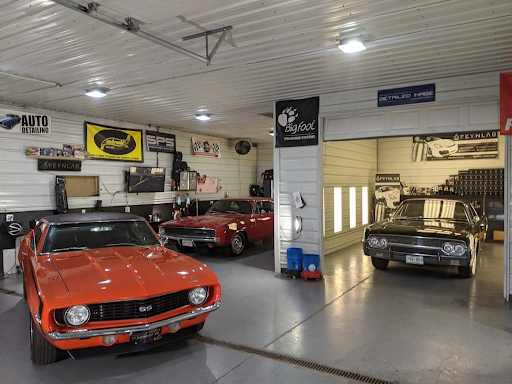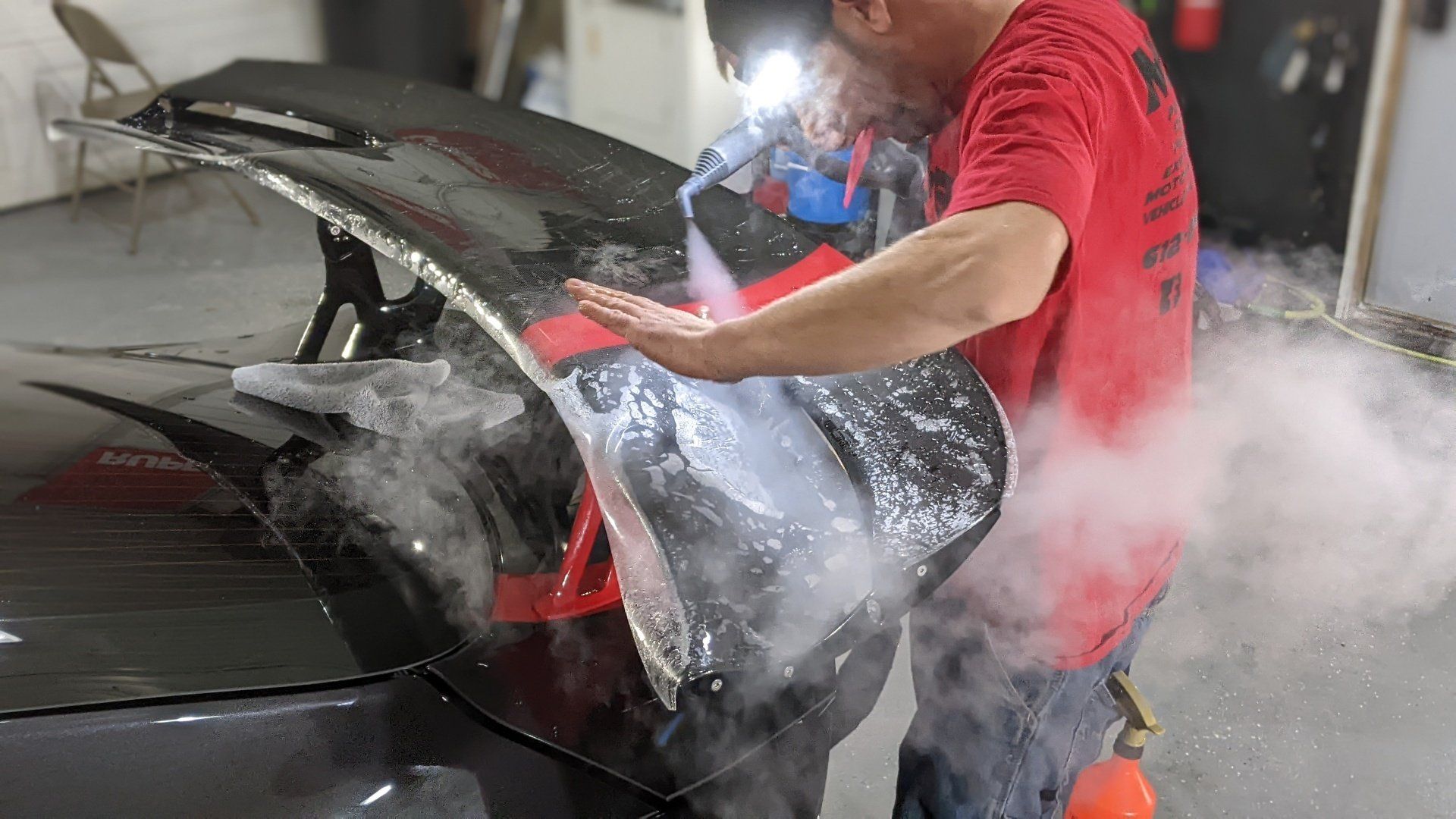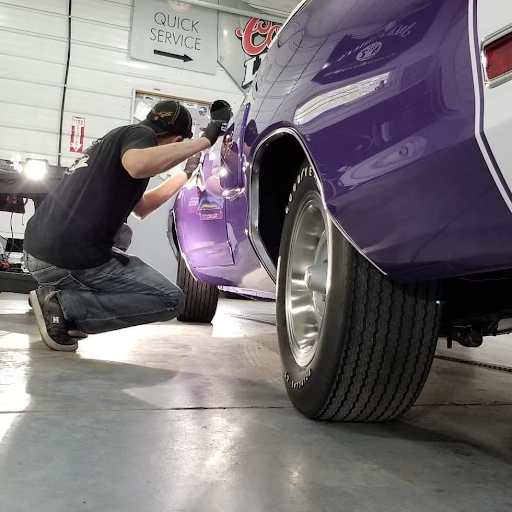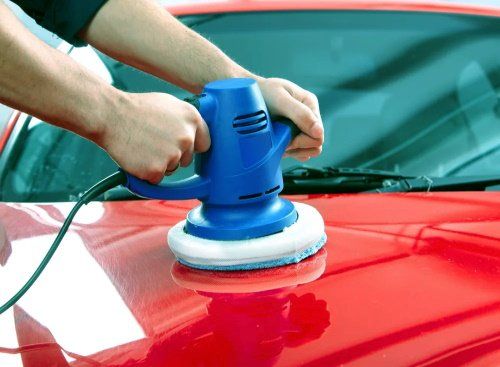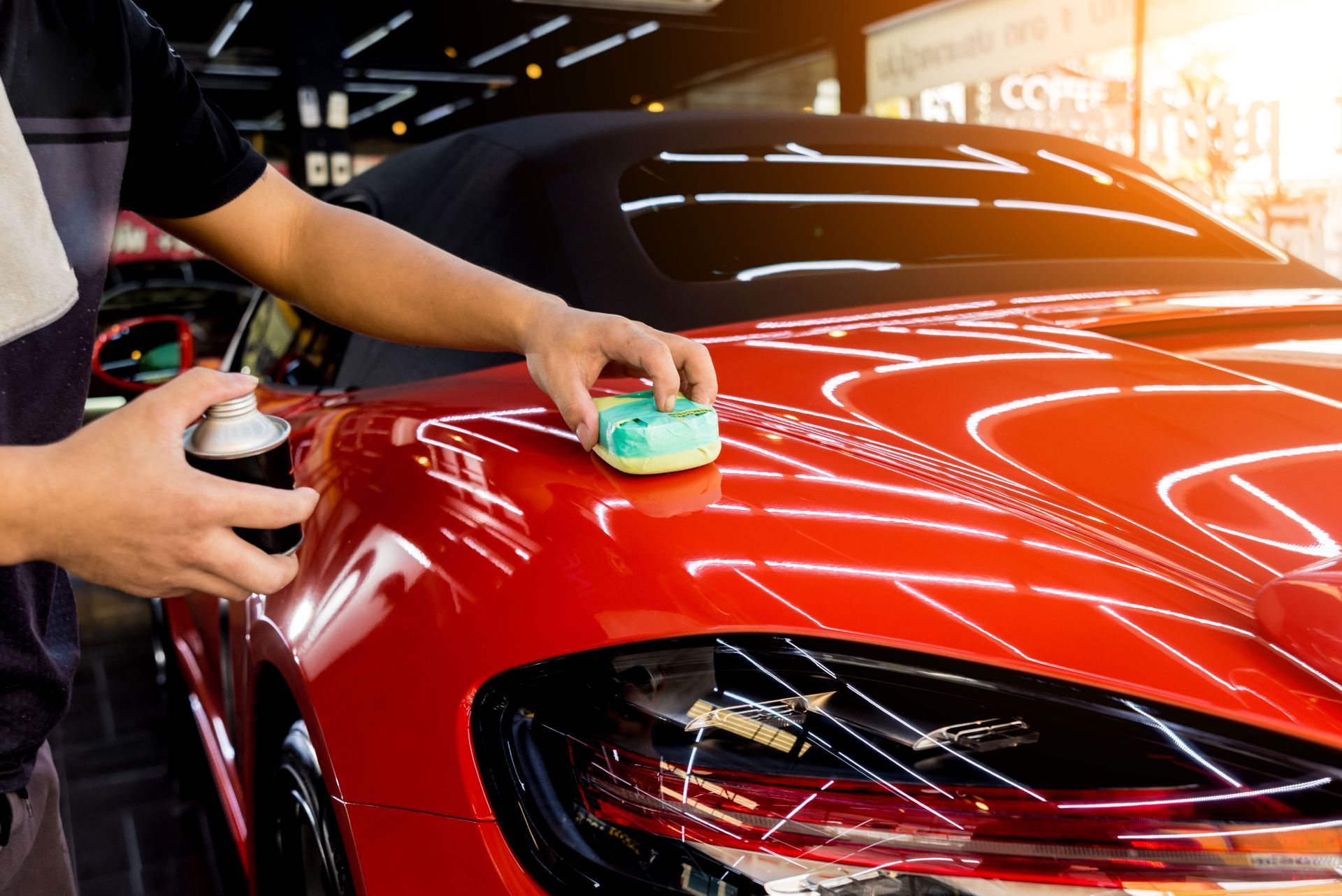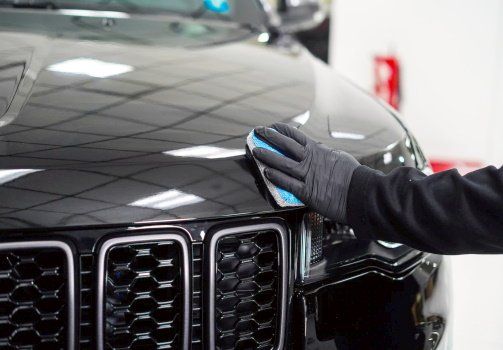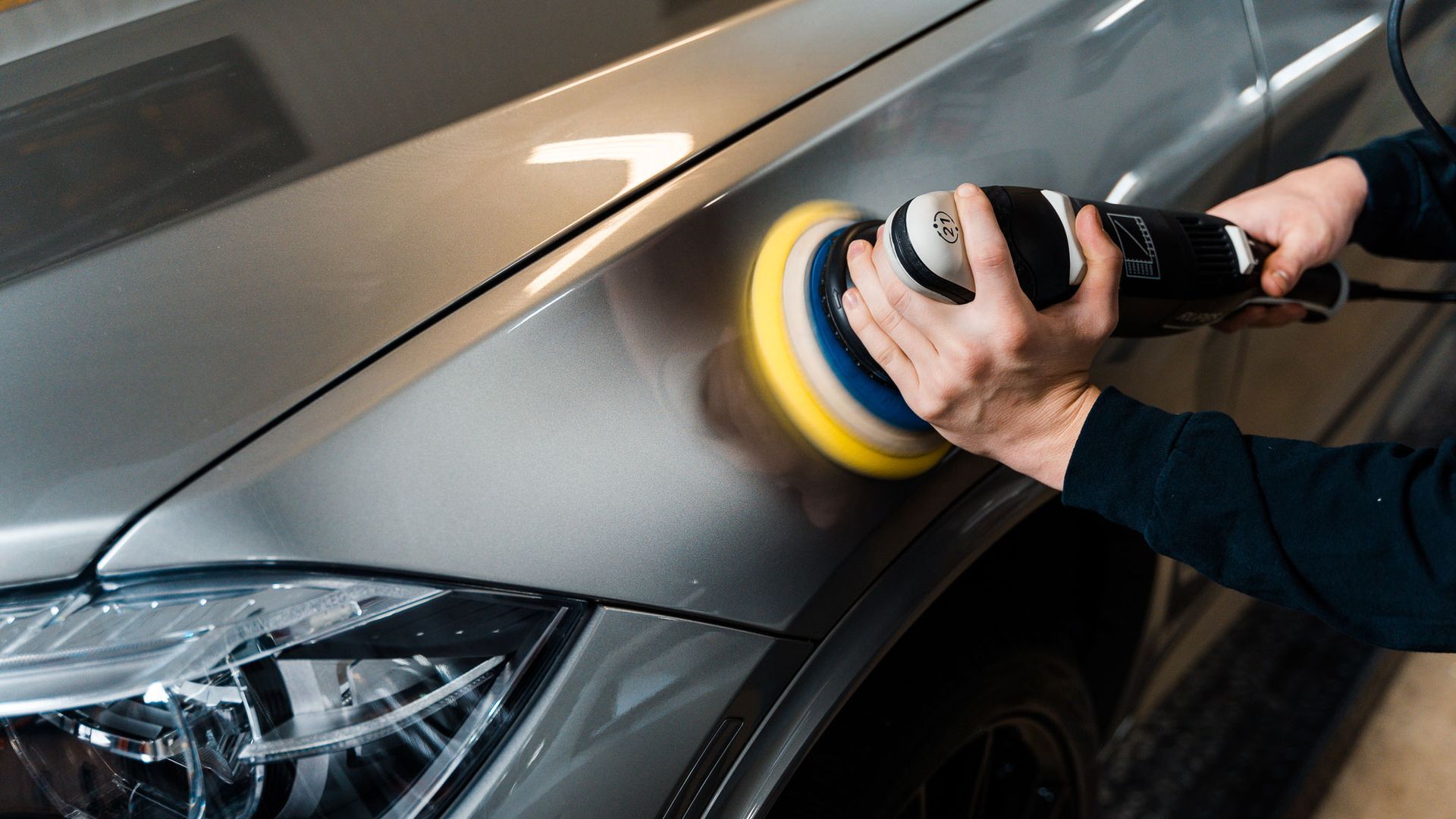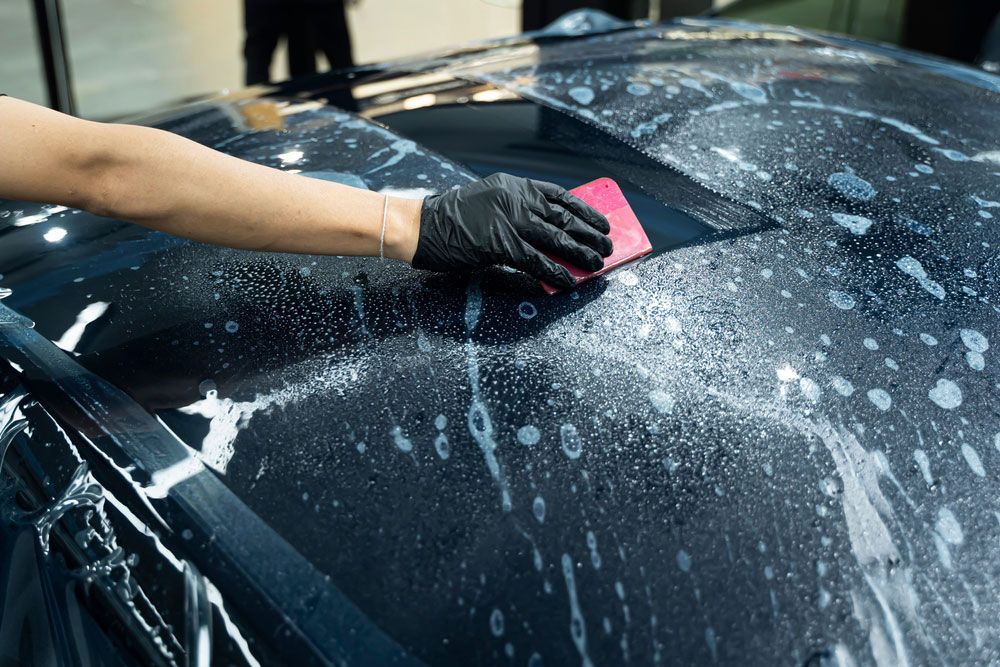What Is Car Paint Correction & Why Do You Need It?
Imagine a grating disturbance coming from your shiny, sleek new car as you run your fingers over stubborn scratches and scuffs. A paint correction service is the hero that can save your vehicle from this unsettling fate, restoring its pristine appearance so it gleams like the day you brought it home.
This blog will reveal what paint correction entails and the moments when it becomes an absolute must for a stunning and scratch-free finish.
Ready for the transformation? Let's dive deep into how paint correction can bring back the life of your cherished ride in no time.
UNDERSTANDING PAINT CORRECTION
Paint correction
is simply the process of returning a vehicle's paint finish to its original shine and brightness. It entails using specialized tools and techniques to remove any imperfections on the surface of the paint, such as scratches, swirl marks, oxidation, and water spots.
One way to think about it is that paint correction is like getting a facial for your car. Just as a facial removes dead skin cells and impurities to reveal brighter, smoother skin underneath, paint correction removes imperfections from the paint to reveal a glossy, shiny finish. Another analogy would be comparing our cars to our own bodies. Just as we go to doctors to address health issues that affect our well-being, we take our cars to professionals for paint correction when there are aesthetic issues affecting their appearance.
It's worth noting that not all damage to a vehicle's paint requires paint correction. Minor blemishes, such as small rock chips or light scratches, can often be fixed through touch-up paint or buffing with a polishing compound. However, more severe damage, such as deep scratches or heavy oxidation, requires professional intervention through paint correction. In these cases, attempting DIY fixes may lead to further damage or make the problem worse.
Now that we have defined what paint correction is and why it might be necessary, let's dive into the types of damage addressed through this process.
Types of Damage Addressed
The types of damage that can benefit from paint correction include:
1.
Swirl marks: These are those annoying spider-web-looking lines on the paint that often result from improper washing techniques or using abrasive sponges or towels. They're especially noticeable on darker-colored cars and can be difficult to remove without professional attention.
2.
Scratches: There is much debate around what qualifies as a "minor" scratch versus a more severe one requiring paint correction. Generally, if a scratch penetrates past the clear coat and into the base coat or primer, it will require paint correction. This is because the clear coat acts as a protective layer, and once this barrier is broken, it leaves the layers underneath vulnerable to further damage.
3.
Water spots: If you live in an area with hard water, you've likely experienced the annoyance of water spots on your car's finish. These spots occur when water droplets evaporate and leave behind mineral deposits that etch into the paint. Removing them requires specialized tools and products to avoid causing further damage.
4.
Oxidation: This occurs when UV rays break down the paint's protective layer, leading to a faded or dull appearance. Over time, oxidation can lead to peeling or flaking of the paint, which requires more extensive repairs.
Think of it like sun damage to our skin—it starts small and seems harmless, but left unchecked, it can lead to more severe issues down the line. Now that we understand the types of damage addressed through paint correction, let's move on to how this process works.
The Correction Process
Paint correction is a multi-step process used to restore the paint on your vehicle to its factory-like condition. The first step usually involves thoroughly washing and drying the car to remove dirt, dust, and other contaminants that may be on the surface. Next, an experienced professional will inspect the body of the car for any swirl marks, scratches, or other damage.
Once the inspection is complete, special equipment is used to remove a thin layer of clear coat from the surface of the paint. This process is called
buffing, and it's done using a rotary polishing machine that applies a cutting compound to smooth out any imperfections in the clear coat. After buffing, another product is applied to enhance the shine and protect the newly polished paint. This final step usually involves applying a wax or sealant that creates a protective layer on top of the polished surface.
To illustrate this process better, let's compare it with sanding wood. If you have a rough piece of wood with bumps and chips, you’ll need an electric sander to smooth out the surfaces. As with a car's paint job, you'll want to start with coarse grit (a low number) and gradually work your way up to finer grit (a higher number), eventually having a smooth surface to work with.
In essence, it’s like painting an exact copy of anything without any blemishes or damage. Paint correction restores color clarity by removing minor impurities from paints and protecting the finish from harsh environmental factors. Clear coats are usually very thin for aesthetic purposes. As a result, they are more vulnerable to the oxidation that sunlight causes over time. Paint correction involves essentially resurfacing these coats so that they are clear once more, which helps eliminate this type of oxidation.
The biggest advantage of paint correction is that it can erase surface scratches from everyday use as well as etching caused by bird droppings. These types of defects are usually too deep to be removed using traditional washing methods.
It's important to note that paint correction won't fix dents or scratches that go beyond the surface of your clear coat. While some damage can be minimized, it will not be completely eliminated. That being said, having even slight blemishes removed from a vehicle’s paint job can do wonders for restoring its aesthetic appeal.
When to Seek Professional Help
It's always a good idea to have your car checked by a professional if you notice any signs of damage or neglect. Regular detailing and maintenance practices can help prevent the need for paint correction in the first place. However, if you notice any of the following issues with your car's paint job, it's time to seek professional help:
1.
Swirl Marks: Using abrasive materials on your vehicle's surface or using improper washing techniques are the two main causes of swirl marks. These marks look like tiny scratches that are visible under bright light. Swirl marks can be removed from your car's paint job with proper buffing techniques applied by an experienced technician.
2.
Fading Paint: Vehicle color fading is one of the most common issues with paint jobs. This usually happens over time due to exposure to sunlight and other environmental elements. If this occurs on your car, then it may require paint correction.
3.
Oxidation: If you see ‘dead’ areas on your car's surface, it may mean it’s oxidizing, which reduces the shine and glossiness of your vehicle’s finish. Oftentimes, sandpapering and rubbing compound application might offer a solution.
It is important to address these issues promptly since they could potentially lead to further damage if left untreated. Not only does paint correction improve the overall look of your car, but it also helps preserve its value.
There are several DIY kits you can use for paint correction, but if you don’t have experience applying these methods, then you should definitely seek professional assistance. Failing to get optimal results during a DIY project could end up making things worse or creating additional damage.
- The International Carwash Association conducted research and found that surface damage to automotive paint can lower a vehicle's resale value by up to 10%.
- A study published in the Journal of Coatings Technology and Research found that professional paint correction techniques could effectively remove up to 95% of defects on a car's painted surface.
According to statistics published by the US Department of Transportation, the average driver will experience at least ten instances of minor paint damage throughout their vehicle's lifespan that could benefit from paint correction.
Signs Your Vehicle Needs Correction
Your car is probably one of your most significant investments. You want to keep it looking new and polished all the time. Unfortunately, environmental factors such as dirt, dust, and pollutants can damage the paint and leave unsightly swirl marks, scratches, and other imperfections on the surface.
How do you know if your vehicle needs paint correction? Here are some signs to look out for:
Paint Swirls: The most noticeable sign that your vehicle needs paint correction is the presence of swirl marks. These are fine scratches on the surface of your car's clear coat that give it a hazy or cloudy appearance when viewed in direct sunlight.
Using an automatic car wash, soiled sponges, or dirty towels is typically the cause of them. While they may appear minor, swirl marks can be quite annoying, especially if you own a black car.
Scratches or scuffs: Another sign that your vehicle may need paint correction is if you notice small scratches or scuffs on the paint surface due to daily wear and tear. Minor accidents or incidents, such as rubbing against a wall while parking or exterior damage from flying debris on the highway, may cause these.
Fading Paint: Faded paintwork is also indicative that your vehicle requires paint correction. Fading occurs over time due to exposure to UV rays and environmental pollution. If you have noticed that certain areas of your vehicle have turned duller than others, it might be time for professional help.
Neglecting these issues will not only make your car look old but also decrease its resale value.
Long-Term Protection Benefits
Most people think of paint correction as just a cosmetic procedure; however, it has much more to offer than just restoring your car's aesthetics. Opting for this service has long-term benefits that go beyond what meets the eye.
Better Protection: By upgrading your car's exterior through paint correction, you're adding an additional layer of protection to its surface. The long-term benefits include increased resistance to environmental damage, dirt, and debris. This will not only save you time and money on future repairs but also extend the life of your vehicle.
Enhanced Resale Value: Paint correction can drastically improve the overall appearance of your car. When it comes to resale value, this improvement can make a big difference in the amount of money that people are willing to pay for your vehicle.
The Impact of Paint Correction on Resale Value
If you're considering selling your vehicle in the future, investing in a
paint correction service can have a significant impact on its resale value. By improving the appearance of your vehicle's exterior and protecting it from further damage, paint correction can help you fetch a higher price when it comes time to sell.
For example, let's say you have a car with minor scratches, swirl marks, or other types of cosmetic damage. These imperfections can make your vehicle look tired or worn out, which can be a major turn-off to potential buyers. However, if you invest in paint correction before putting it up for sale, you'll be able to remove these blemishes and restore the paint to its original shine and luster.
Additionally, it can provide long-term protection against environmental factors such as UV rays, oxidation, and debris. This means that your vehicle will look better for longer, something that potential buyers are sure to appreciate when they come to inspect it.
Some people may argue that investing in a paint correction service isn't worth the cost if you're simply planning on selling the vehicle anyway. After all, why spend money on something that won't benefit you personally? However, this line of thinking fails to take into account that investing in your vehicle now can result in a higher return when it comes time to sell it.
It's like renovating a kitchen before listing your home for sale. While it may seem counterintuitive to spend money on a home that you're leaving, a modern and updated kitchen can significantly increase the resale value of your property. The same goes for paint correction services; investing in your vehicle's appearance can pay off in the long run.
Get Expert Paint Correction Service in Asanti County, MN
Paint correction is a meticulous process that rejuvenates the exterior of your vehicle, rectifying imperfections and restoring its lustrous finish. Through a series of meticulous abrasion and polishing techniques, professional detailers skillfully remove surface defects such as swirl marks, scratches, and oxidation.
At
M&B Paint Correction and Auto Reconditioning,
we take pride in our team of skilled technicians who have mastered the art of paint correction. With our in-depth knowledge and precision techniques, we will transform your car into a showroom-worthy masterpiece.
Give us a call today or visit us online to learn more and book your appointment!

